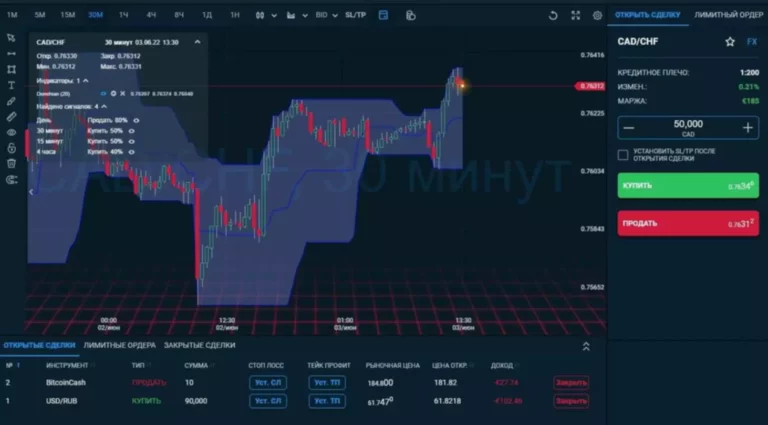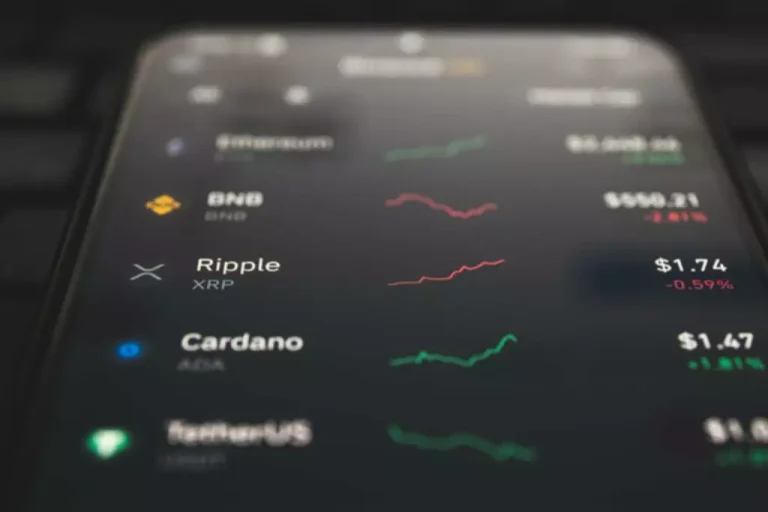Content
This discrepancy indicates that the prevailing trend might be losing strength, and a reversal could be on the horizon. Martin Pring’s Technical Analysis Explained explains the basics of momentum indicators by covering divergences, crossovers, and other signals. There are two more chapters covering specific momentum indicators, each containing a number of examples. Chart 4 shows Crown Castle (CCI) with a breakout in July to https://www.xcritical.com/ start an uptrend. The Full Stochastic Oscillator (20,5,5) was used to identify oversold readings.
What is a great video about the Stochastics Oscillator_

In reality, the two can standard deviation indicator complement each other and are often used in tandem by traders. You will also come across what traders refer to as the %D stochastic oscillator indicator. The downside of the %D is that emerging trends will show up later than in the %K. There is a general consensus that when stochastic oscillator levels fall below 20, it indicates the asset is oversold. In theory, the positive momentum is above the line, while the negative momentum is below it.
What is the best timeframe for Stochastics?
When the stochastic line falls below 20 or rises above 80, it produces a trading signal. An example of such an oscillator is the relative strength index (RSI)—a popular momentum indicator used in technical analysis—which has a range of 0 to 100. Whether you’re looking at a sector or an individual issue, it can be very beneficial to use stochastics and the RSI in conjunction with each other. Smoothing has a significant impact on the signals generated by the Stochastic Oscillator. Smoothing essentially filters out the noise in the price data, providing a clearer indication of underlying trends and momentum. Additionally, traders may incorporate other momentum Anti-Money Laundering (AML) indicators alongside the Stochastic Oscillator, such as the Relative Strength Index (RSI) or the Moving Average Convergence Divergence (MACD).
What is the Stochastic Oscillator?
Given the high volatility of cryptocurrencies, the oscillator can provide useful signals about potential reversals or the strength of the current trend. When combined with other technical analysis tools, such as trendlines or support and resistance levels, these signals can become even more potent. It will act as a filter for your signals, as long as your trades are in the direction of the moving average.

The %D line is a moving average of the %K line and helps smooth out the volatility. It is calculated by taking the n-period simple moving average of the %K line. The Stochastic Oscillator (STOCH) was developed by George Lane in the 1950’s. Lane believed that his indicator was a good way to measure momentum which is important because changes in momentum precede change in price. There are many ways in which you can use the stochastic oscillator indicator to open positions, close positions, or even reduce your position if the chart is at a critical point.
You can’t expect a particular style or strategy to work on various instruments. As you’ll experience, stochastics don’t work well on commodities, for example, while it works well in the stock market. According to George Lane, the Stochastics indicator is to be used with cycles, Elliott Wave Theory and Fibonacci retracement for timing. In low margin, calendar futures spreads, one might use Wilders parabolic as a trailing stop after a stochastics entry. A centerpiece of his teaching is the divergence and convergence of trendlines drawn on stochastics, as diverging/converging to trendlines drawn on price cycles. While momentum oscillators are best suited for trading ranges, they can also be used with securities that trend, provided the trend takes on a zigzag format.
- By understanding the nuances of each variation and applying them strategically, you can enhance your trading strategy and increase your chances of success in the market.
- Overbought and oversold merely mean the price is trading near the top or bottom of the range for the specified time period.
- A bullish divergence forms when price records a lower low, but the Stochastic Oscillator forms a higher low.
- The signal line crosses and moves below 80 did not provide good early signals in this case because KSS kept moving higher.
- In this section, we’ll explore some of these pitfalls to help you avoid them.
In the stochastic oscillator, %K is the raw measure that indicates the current closing price’s position relative to the range over a specified period. %D is the moving average of %K, typically a 3-period simple moving average, which smooths out the %K values to generate a more stable signal. In stock trading, market participants use two contrasting types of analysis. Fundamental analysis examines market news, economic/social/political forces, and earnings data to predict how an asset’s price will move. Technical analysis, on the other hand, uses charts and various technical indicators to forecast market conditions. One of the essential tools used for technical analysis in securities trading is the stochastic oscillator.
After identifying the direction of a security’s trend, the stochastic oscillator can help determine when the security is overbought or oversold, thus identifying lower-risk trade-entry points. The general idea for this oscillator is that in an uptrending market prices will close near the indicator’s high, and in a downtrending market prices will close near the low. Trade signals are generated when the “fast” %K line crosses above or below the three-period moving average, or “slow” %D. The stochastic oscillator is a form of stock technical analysis that calculates statistically opportune times for trade entries and exits. One common strategy using the stochastic oscillator involves trading on overbought and oversold signals.
On the one hand, the stochastic oscillator is an indicator of momentum both upwards and downwards. On the other hand, some traders may see it as an indicator of overbought and oversold prices. The critical difference is how you use the indicator within your investment strategy.
The E-Mini S&P 500 futures contract is amongst the highest volume assets in the futures market. It will not just suddenly stop and turn back to earth right away after running out of fuel. The fading momentum will continue to push it higher at a drastically falling speed. However, when the positive momentum eventually ends, the rocket will turn and head back towards earth. Using the recent highs and lows for comparison, you should be able to identify a change in momentum. Ralph Dystant and George C. Lane were integral to creating the stochastic oscillator indicator and the influence it still holds with investors today.
This range helps traders identify potential overbought and oversold conditions within a given market. When the indicator rises above 80, it suggests that the asset may be overbought, signaling a potential downturn. Conversely, when the Stochastic Oscillator falls below 20, it indicates potential oversold conditions, suggesting a possible upward reversal. This range provides traders with valuable insights into market dynamics and potential trading opportunities.
The second overbought position begins to emerge when the fast stochastic oscillator and the SMA move above 80%. A move above 80% or below 20% should not necessarily be seen as a signal to sell or buy but an early warning that momentum may be about to change. Many people prefer to wait for a sustained fall back below 80% or move above 20% before reacting – thereby cutting out a degree of volatility which can sometimes create false signals.
For a long-term view of a sector, the chartist would start by looking at 14 months of the entire industry’s trading range. When smoothing is applied to the Stochastic Oscillator, it can help reduce false signals and improve the overall accuracy of the indicator. By smoothing out short-term price movements, the oscillator becomes less sensitive to minor fluctuations, resulting in a smoother, more reliable signal. You can use stochastic together with moving averages (long-term and short-term definitions of the same indicator), and support and resistance levels. The latter is a bit more complex to code, though, and is mostly used discretionary. The above chart shows a chart with long setups highlighted, using both the outer and inner threshold examples.
On the other hand, if the price breaks lower than the previous low, it could indicate that sellers are in control and traders can enter short trades. In choppy or range-bound markets, the price frequently moves back and forth between overbought and oversold levels, making it difficult to identify reliable trading signals. The stochastic indicator can also help you identify bull and bear setups in anticipation of a future reversal. Since the stochastic oscillator is range-bound, it’s beneficial for generating overbought and oversold signals.
